Table of contents
Garlic ( Allium sativum ) is used as a medicinal plant and as a delicious, aromatic spice that has a certain spiciness when eaten raw. Chlorophyll counteracts the unpleasant smell of garlic.
Use in the kitchen:
Common garlic or cultivated garlic is characterized by a characteristic aroma and an intense smell. Therefore, not everyone likes it equally. Especially in cultures where little or no garlic is used in cooking, the garlic aroma or the body odor of people who have eaten garlic can be disturbing.
The aroma of garlic is slightly sweet and ranges from spicy (smaller cloves) to milder and nutty (larger cloves). When cooked or fried for a long time, garlic loses a lot of its spiciness and smell. 1 Fresh garlic has a more intense flavor than dried garlic; see the purchasing section below.
The highly aromatic garlic cloves are eaten raw or cooked and - depending on preference - whole, chopped or pressed. They go well with all spicy dishes and generally have a flavor-enhancing effect. Garlic tastes very good in salad dressings, hummus (hommus, humus), curries, tomato dishes, spring soups, rice and pasta dishes and cooked grains. It goes well with potatoes, avocado, olives, mushrooms or various vegetables. It is also wonderful for marinades. Garlic goes well with the spicy herbs of Mediterranean cuisine (e.g. rosemary , thyme, basil, oregano, sage ) as well as with ginger, pepper, chili and various curry variants. If you prefer a milder taste experience, you can rub the salad bowl with a clove of garlic or braise, steam or boil just a clove when cooking vegetables.
What you should look out for: Cloves with a "green soul", i.e. with a germ inside the clove, are particularly rich in sulphur compounds. The same applies to larger green shoots. They can taste bitter and are very spicy and hot, but non-toxic. 2,3 If the garlic is exposed to too much heat when frying, it also takes on a bitter aroma.
Garlic is popular in many parts of the world and is an important ingredient in many traditional recipes. It flavors sauces or dips such as aioli or tzatziki and refines typical antipasti (Italy), tapas (Spain) or mezze (meze) in the Middle East and surrounding areas. In many countries it is also enjoyed pickled in brine or oil, whereby some of its flavor is transferred to the liquid and the garlic tastes milder. Some cuisines also use the fresh leaves of the plant as a spice. 4 In Spain and Asia, garlic cloves are replaced in some dishes with garlic sprouts or garlic germs, which have a more delicate flavor.
Vegan recipe for aubergine hummus with sesame seeds, onions and garlic:
For this oriental specialty, soak 220 g of raw chickpeas in fresh water for at least 12 hours (24 hours is better), pour away the water and rinse the chickpeas. Then cook in plenty of water and drain. Bake an aubergine in the oven at 180 °C for 45 minutes. Bake an onion cut into small pieces and eight whole garlic cloves with the aubergine for the last 15 minutes. When the aubergine has cooled, remove the skin and discard. Puree together with the pressed garlic cloves, the chickpeas, the onion pieces, 4 tbsp sesame seeds , 2 tbsp lemon juice and half a tsp chili powder with a hand blender, adding water, to make a creamy hummus. You can find exact quantities in the recipe for aubergine hummus with sesame seeds, onions and garlic .
Preparing it as a tea is not advisable because alliin is hardly soluble in water. The substance would convert into unpleasant-smelling sulphur compounds anyway. 5
| Not only vegans or vegetarians should read this: Vegans often eat unhealthily. Avoidable nutritional errors . |
Purchasing - where to buy?
Garlic bulbs or garlic heads consist of a main bulb and 5-20 smaller, closely spaced secondary or brood bulbs, the cloves. The garlic cloves are curved and grow in a circle around the main bulb. The garlic bulb itself is surrounded by a thin, white, purple or reddish shell. Garlic bulbs can be bought fresh or dried. A striking distinguishing feature of fresh garlic bulbs is the juicy and green stem. When choosing fresh garlic, choose specimens that look juicy and are free of yellow or dark spots. 6
In most supermarkets and major retailers such as Coop , Migros , Denner , Volg , Spar , Aldi , Lidl , Rewe , Edeka , Hofer etc., garlic bulbs are available with a dry skin. This should be smooth, as thin as tissue paper, white or pink in colour and have no spots or cracks. Look for organic quality, which you can find mainly in health food stores and organic shops or at the market. Organic farming protects nature and the products are not as contaminated as those from conventional farming.
Garlic can be found pickled in brine or oil in a jar, sometimes with herbs, paprika or chili. But garlic granules can also usually be found at the above-mentioned sales locations.
You will sometimes come across black garlic in the delicatessen. This is fermented garlic, which instead of the strong taste has only a subtle garlic note and is otherwise more reminiscent of dried plums, balsamic vinegar and vanilla. Garlic sprouts or garlic germs are available in jars in stores or fresh in Asian shops.
Found in the wild:
Wild garlic is found in areas where it was once naturalized as a cultivated plant. Especially in favorable climates and primarily where wine is grown. It is either a wild form of the actual cultivated garlic ( Allium sativum var. sativum ) or a wild snake garlic (also called Rockenbolle or Rocambole; Allium sativum var. ophioscorodon ). 7 Not to be confused with the vineyard leek or "wild garlic" ( Allium vineale ), whose above-ground bulbs are used as a seasoning in the Balkans and taste like garlic. 8,9
The related wild garlic ( Allium ursinum ) can also be found in the wild. It is also a plant species from the Allium genus and is sometimes called "wild garlic". It grows throughout Europe in moist alluvial forests, beech, deciduous and mixed forests, but also in hedges. It is collected between March and May, and the bulbs can be dug up in the autumn and used as well. 10 You can find more information under the ingredient wild garlic .
Although not closely related to garlic, there is a wild alternative, common garlic mustard ( Alliaria petiolata ), which has a fine garlic and cress flavor and is a good herb. 10
Storage:
Garlic should be stored in a dry state, similar to onions, away from light. The outer shell must not be damp to avoid the risk of mold. Fresh garlic has a short shelf life and is best used immediately if it has been cut. It will only last one or two days in the fridge if it is damaged and loses its flavor.
If possible, fresh garlic can be tied at the stem and hung in a cool, dry place. It is also possible to hang fresh garlic in braids in the sun or dry it in slices in a dehydrator. 6
Ingredients - nutritional value - calories:
The garlic bulb contains carbohydrates, especially fructans, and sulfur-containing compounds (the odorless alliin or cysteine sulfoxide and their precursors). For example, γ-glutamylcysteine peptides, the conversion of which into allylthiosulfinates has antioxidant and antibacterial effects. In fresh garlic, the alliin content is between 0.5 and 1% (or 5-14 mg/g). 11 Alliin is a non-proteinogenic amino acid.
Why does garlic smell? Alliin lyase (or alliinase) produces the odorous active ingredient allicin and other secondary products. 12 This happens when the plant tissue is damaged and is considered an antibiotic defense mechanism that protects the plant against parasites, microorganisms and predators. When heated, other sulfur-containing compounds are formed, such as diallyl disulfide, diallyl thiosulfonate and ajoene. After consumption, allicin is converted with the red blood pigment to hydrogen sulfide and enters the lungs and skin, causing the characteristic garlic smell in humans. 7,13,14 Not everyone smells of garlic after eating it, or at least the intensity varies greatly.
You can find the nutritional tables before the text in CLICK FOR. There you can also find comparative values with the other ingredients.
Since people rarely eat a lot of garlic, the high proportion of vitamin B 6 (pyridoxine) of 1.2 mg/100g (88% of the daily requirement) is not so important. Rice bran (4 mg), wheat bran (1.3) and wheat germ (1.3) etc. are also good sources of vitamin B 6. 100 g of garlic cover 84% of the daily requirement for the trace element manganese with 1.7 mg, and the same is true for chickpeas , which contain 2 mg/100g of manganese. 17
It is primarily the so-called secondary plant substances that make garlic so healthy. The optimum is not the maximum, as can be said here too, because everything, even vitamins, can be harmful to health. We never talk about garlic as a superfood or a miracle bulb, as these are just blanket terms used by sellers that actually mean nothing.
Health aspects - effects:
How can you get rid of garlic smell? Milk (it neutralizes about half of the sulfur compounds in the breath 15 ), fresh parsley , cloves , coffee beans, ginger or basil are said to help against garlic breath. 7,16 The best way to combat garlic smell from the skin pores is with chlorophyll tablets.
The allicin in garlic has an antibiotic and antibacterial effect. For this reason, garlic can have a soothing effect on gastrointestinal disorders, as it helps against fermentation processes in the intestines and their accompanying symptoms (flatulence, cramps and pain). It is also considered to be a choleretic agent. The bulb also has a vasodilating, relaxing effect and is said to prevent thrombosis (thrombi). 18 It has not been scientifically proven that garlic extract lowers blood pressure, i.e. has a blood pressure-lowering effect. The existing studies serve interests and are not really conclusive, writes the Cochrane Network , which is known to be objective. However, it is suspected that garlic has an anticoagulant effect.
Garlic and the milder garlic sprouts are considered healthy as a dietary supplement. From the work of Prof. Dr. Sigrun Chrubasik-Hausmann , University Hospital Freiburg : The WHO recommends a daily dose of up to 5 g of fresh garlic or up to 1.2 g of garlic powder or other preparations with up to 12 mg of alliin or up to 5 mg of allicin per day. The work says a lot and cites many sources, but seems to promote black garlic (AGE). 19 Black garlic is normal garlic that has been fermented under controlled conditions (under cover at defined heat and humidity).
It is astonishing how little it takes to later sell a term like FruArg (N-α- (1-deoxy-D-fructos-1-yl) -L-arginine) as a miracle cure. Garlic is said to protect brain cells or the brain against aging and disease. If you look for reliable evidence on PubMed , it is thin on the ground. In mice, it has been shown that FruArg can cross the brain barrier (Johnson MC et al, 2016). Another study shows that FruArg can alleviate oxidative stress and neuroinflammatory reactions caused by LPS in BV-2 cells (Song H et al, 2016). It all began with an analysis from 2014 (Zhou H et al.) which stated: FruArg can attenuate neuroinflammatory responses and promote resilience in LPS-activated BV-2 cells by suppressing NO production and regulating the expression of several protein targets associated with oxidative stress.
Dangers - Intolerances - Side effects:
Taking fresh garlic on an empty stomach can cause heartburn, nausea, vomiting and diarrhea. 19 However, the recommended daily dose of 2-3 cloves of garlic does not cause any problems for the average person. 18 Allergic reactions rarely occur. 13,20
The above-mentioned study says that taking garlic capsules or garlic powder for medicinal purposes can damage the intestinal mucosa - unlike black garlic extract. Interactions between garlic and medications can occur, but have not been sufficiently studied. Patients taking synthetic anticoagulants should not consume more than 4 g of garlic per day, and even less in old age. Further studies are needed on other possible interactions. 19
It is recommended that raw garlic should not be applied locally to children or inserted into body openings such as the ear canal, even if it is organic. This can lead to irritation of the (mucous) skin. 21 In breastfeeding women, the active ingredients of garlic pass into breast milk. This can cause children to drink more slowly and smell of garlic themselves. 13,22
Use as a medicinal plant:
Various scientific studies have shown that the ingredients in garlic can lower blood lipid levels and thus have a preventive effect against arteriosclerotic changes in the blood vessels. 23 Other studies show a preventive or alleviating effect against colon cancer. 24 However, no clear results could be obtained on the reduction of total cholesterol and triglyceride levels. The studies contradict each other here. 25,26
Folk medicine - natural medicine:
In ancient times, garlic was considered a tonic and used to drive away lice and intestinal parasites. In the Middle Ages, garlic was grown in monastery gardens and used to treat snake bites, hair loss, toothache, skin rashes and respiratory diseases. 7
Occurrence - Origin:
Where does garlic come from? Garlic was probably originally found in Central Asia 27 and as far as northeastern Iran 7. It was known more than 5,000 years ago in China, India and Egypt - also as a medicinal product. Today, it is grown in many countries in Asia, Africa, Europe and America. In 2017, the annual global harvest was around 28.8 million tons, with the majority coming from China. 7
Growing in the garden or as a potted plant:
You can grow your own garlic from bulbs or individual cloves. Using bulbs takes a year longer to grow.
Individual cloves can be planted 15-20 cm apart in the soil of the herb garden. These then form garlic bulbs, which can be harvested as green onions (fresh garlic) or as dried onions. Dried onions are ready when a third of the leaves have wilted. 28 The garlic cloves can be planted either in spring or autumn, because the plant is hardy and winter-resistant. There are numerous varieties for both plantings. However, it seems that the yield is greater when planted in autumn. 7,28 If the cloves are not yet developed, they are called round garlic (similar to Chinese garlic or solo garlic, see below if there is a risk of confusion).
Danger of confusion:
According to Wikipedia, there is a danger of confusion between garlic in its form as Chinese garlic (or solo garlic) and elephant garlic. This is because Chinese garlic ( Allium sativum ) consists of only one large garlic bulb. Elephant garlic or giant garlic, however, belongs to the leek group ( Allium ampeloprasum ) - like the well-known leek (or leeks) 29 . The bulbs of giant garlic are larger and weigh up to 60 g. 30,31
General information:
Garlic stands for Allium sativum , a plant species from the genus leek ( Allium ) in the subfamily Alloideae and in the family Amaryllidaceae. Some species from this genus are used as spices, vegetables and medicinal plants, others as ornamental plants. The genus Allium includes around 940 species, including the leek ( Allium ampeloprasum Leek group or Allium porrum) , the pearl onion ( Allium ampeloprasum pearl onion group), the wild garlic ( Allium ursinum ), the chives ( Allium schoenoprasum ) and the onion ( Allium cepa ).
Strictly speaking, the plant species Allium sativum also includes the variety Allium sativum var. ophioscorodon (syn.: Allium ophioscorodon ), which is also called snake garlic (not snake leek) or rockenbolle (Rocambole). 7
Sometimes, when cutting garlic, discoloration occurs - similar to onions. The green color in garlic is formed by reactions of the amino acids with sulfur compounds. This is harmless to health. 7
Many languages have similar or derived terms for leek, garlic and onion. The German word Knoblauch contains the image of the "split" leek (see the verb klieben = split, which is only preserved in southern Germany), since a garlic bulb can be split into many cloves. 4
In English, garlic is called garlic. Common names in German: Chnobli, Knobi, Knofi, Knowwlich, Knofl, ordinary garlic.
But there are also some - partly protected - local breeds or varieties such as in Italy, for example the varieties: Aglio Rosso di Nubia ( Nubia Red Garlic ), also known as Aglio di Paceco ( Paceco Garlic ) and as Aglio di Trapani ( Trapani Garlic ) in Sicily, Aglio Bianco Polesano in Venice, Aglio di Voghiera in the Emilia-Romagna region including Ferrara.
But France also produces varieties such as the Ail blanc de Lomagne in the province of Gascony, the Ail de la Drôme in the department of Drôme or the Ail rose de Lautrec in the municipality of Lautrec (southern France). Spain also produces a speciality called Ajo Morado de las Pedroñeras, especially in Las Pedroñeras in the province of Cuenca.
Alternative names:
There are many other common names for garlic, regional and old names in Old High German: Chlobaloch, Chlobeloch, Chlobelouch, Chlofolouch, Chloviloich, Chlovolouch, Chnobeloch, Chnobleich. And: Aberknoblauch, Clovalouch, Clovelouch, Gartenknoblauch, Gruserich, Klobelouch, Kloblauch, Kloblouch, Kloflok, Kluflock, Knabelach, Kniuwleng, Knobel, "Knuawlet", Knobelouch, Knoblech, Knoblich, Knoblecht, Knobleig, Knoflak, Knuflak, Knufflóek, Knuflock, Knuftlók, Kruftlók, Loech, Look.
Bibliography - 31 Sources
| 1. | Stegmann A. Kräuter und Gewürze von A bis Z. Hamburg: Gruner + Jahr; 1978. |
| 2. | freiepresse.de/ ratgeber/onkel-max/ muss ich die gruenen triebe aus dem knoblauch entfernen artikel10193734 |
| 3. | bzfe.de/forum/index.php/ forum/showExpMessage/ id/45725/page1/17/ searchstring/+/forumId/3 |
| 4. | gernot-katzers-spice-pages.com/ germ/Alli_sat.html |
| 5. | awl.ch/heilpflanzen/ allium_sativum/ knoblauch.htm |
| 6. | erlebnisbauernhof-gertrudenhof.de/ index.php/ bauernmarkt/ obst-gemuese-und-mehr/ knoblauch/ |
| 7. | Wikipedia Knoblauch. |
| 8. | Wikipedia Weinberg-Lauch. |
| 9. | Heiss E. Wildgemüse und Wildfrüchte. Mannheim: Waerland; 1984. |
| 10. | Mabey R. Essbar: Wildpflanzen, Pilze, Muscheln für die Naturküche. Bern: Haupt Verlag; 2013. |
| 11. | Dingermann Th. Hänsel R. Zündorf I. Pharmazeutische Biologie: Molekulare Grundlagen und klinische Anwendungen. Berlin: Springer; 2002: 61. |
| 12. | Wikipedia Alliin. |
| 13. | Wikipedia Englisch Garlic. |
| 14. | Block E. Garlic and Other Alliums: The Lore and the Science. Royal Society of Chemistry; 2010; 79ff. |
| 15. | Hansanugrum A. Barringer S.A. Effect of Milk on the Deodorization of malodorous Breath after Garlic Ingestion. In: Journal of Food Science 75 (2010): C549–C558. doi:10.1111/j.1750-3841.2010.01715.x |
| 16. | berliner-zeitung.de/ gesundheit/ adieu mundgeruch sechs einfache tricks gegen knoblauch atem-26146638 |
| 17. | USDA U.S. Department of Agriculture. |
| 18. | Pahlow M. Das grosse Buch der Heilpflanzen: Gesund durch die Heilkräfte der Natur. München: Gräfe und Unzer Verlag; 2013. |
| 19. | uniklinik-freiburg.de/ fileadmin/ mediapool/08_institute/ rechtsmedizin/pdf/ Addenda/2016/ SchwarzerKnoblauch.pdf |
| 20. | mobil.bfr.bund.de/ cm/343/ knoblauch kann allergische reaktionen ausloesen.pdf |
| 21. | Baruchin A.M. et al. "Garlic burns". Burns 2001. 27 (7): 781–2. doi:10.1016/S0305-4179(01)00039-0. PMID 11600262. |
| 22. | web.archive.org/web/ 20070926081857/ http://www.ukmi.nhs.uk/ Med_info/documents/ GarlicSuppsCMSFinal2.pdf |
| 23. | Ried K. et al. Effect of garlic on blood pressure: a systematic review and meta-analysis. PMC 2442048 (free full text). |
| 24. | Ngo S. N. Williams D. B. et al. Does garlic reduce risk of colorectal cancer? A systematic review. In: The Journal of nutrition (2007). 137 (10): 2264–2269. PMID 17885009. |
| 25. | Reinhart K.M. et al. The impact of garlic on lipid parameters: a systematic review and meta-analysis. Nutr Res Rev. 2009 Jun;22(1):39-48. doi: 10.1017/S0954422409350003. |
| 26. | Lawson L.D. Gardner C.D. Effect of raw garlic vs commercial garlic supplements on plasma lipid concentrations in adults with moderate hypercholesterolemia: A randomized clinical trial. In: Archives of Internal Medicine (2007); 167 (4): 346–353, DOI:10.1001/archinte.167.4.346 / PMID 17325296 (free full text). |
| 27. | npgsweb.ars-grin.gov/ gringlobal/ taxonomydetail.aspx?2368 |
| 28. | lwg.bayern.de/mam/ cms06/gartenbau/ dateien/ 2016_g2-02-12 knoblauch sorten.pdf |
| 29. | Wikipedia Ackerlauch |
| 30. | eur-lex.europa.eu/ LexUriServ/ LexUriServ.do? uri=OJ:C:2010:201:FULL:EN:PDF |
| 31. | Wikipedia Englisch Solo garlic |

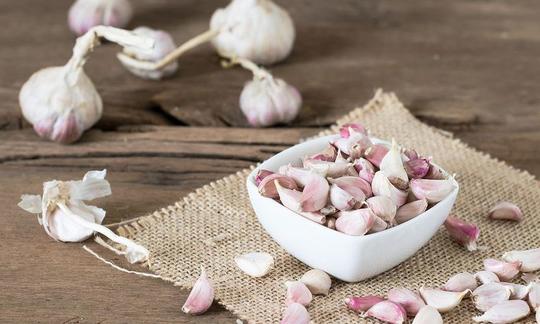

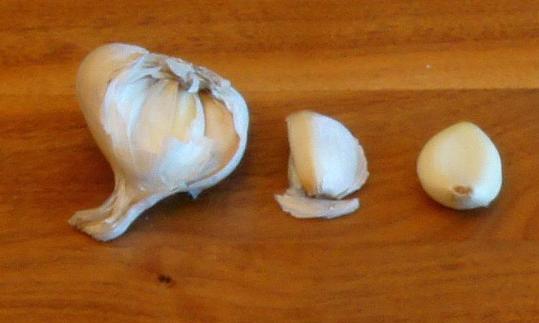



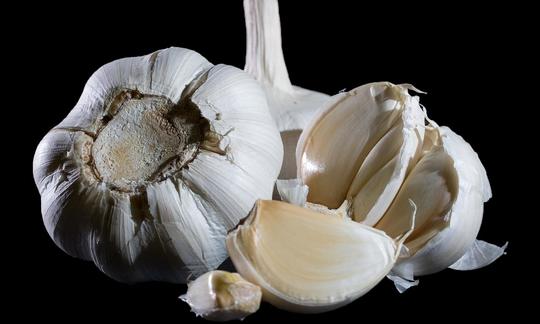

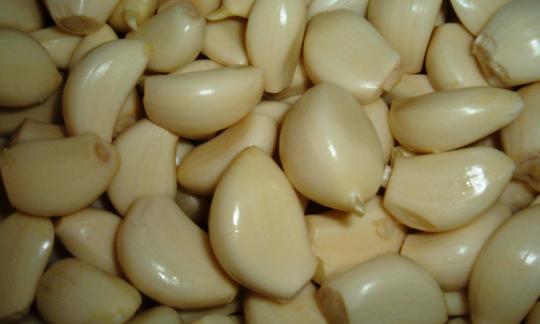

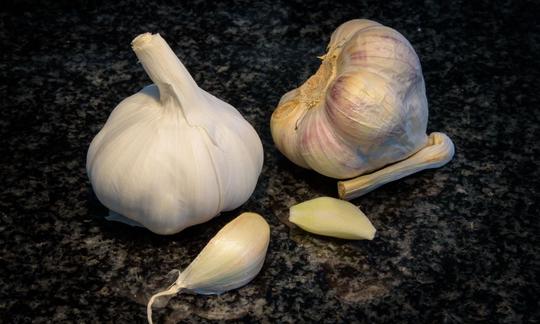

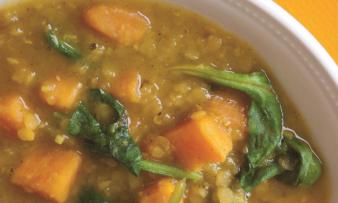
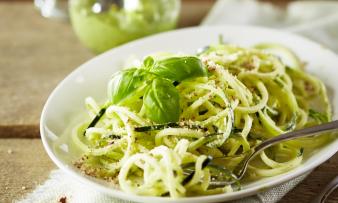
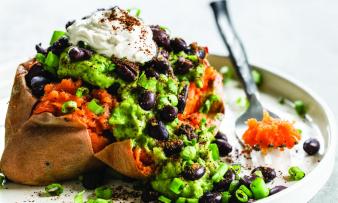





Comments